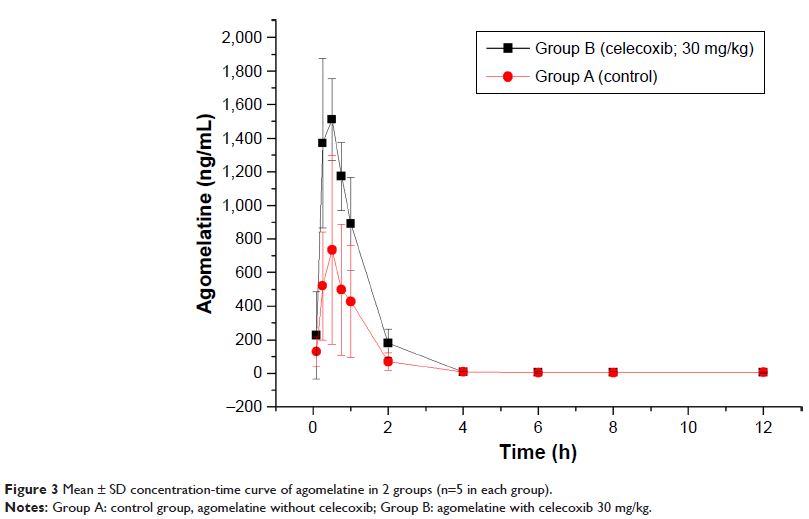9 0 6 7 6
论文已发表
注册即可获取德孚的最新动态
IF 收录期刊
- 2.6 Breast Cancer (Dove Med Press)
- 3.9 Clin Epidemiol
- 3.3 Cancer Manag Res
- 3.9 Infect Drug Resist
- 3.6 Clin Interv Aging
- 4.8 Drug Des Dev Ther
- 2.8 Int J Chronic Obstr
- 8.0 Int J Nanomed
- 2.3 Int J Women's Health
- 3.2 Neuropsych Dis Treat
- 4.0 OncoTargets Ther
- 2.2 Patient Prefer Adher
- 2.8 Ther Clin Risk Manag
- 2.7 J Pain Res
- 3.3 Diabet Metab Synd Ob
- 4.3 Psychol Res Behav Ma
- 3.4 Nat Sci Sleep
- 1.9 Pharmgenomics Pers Med
- 3.5 Risk Manag Healthc Policy
- 4.5 J Inflamm Res
- 2.3 Int J Gen Med
- 4.1 J Hepatocell Carcinoma
- 3.2 J Asthma Allergy
- 2.3 Clin Cosmet Investig Dermatol
- 3.3 J Multidiscip Healthc

塞来昔布对阿戈美拉汀代谢的体外和体内抑制作用
Authors He JY, Fang P, Zheng X, Wang CC, Liu TH, Zhang BW, Wen J, Xu RA
Received 19 December 2017
Accepted for publication 31 January 2018
Published 9 March 2018 Volume 2018:12 Pages 513—519
DOI https://doi.org/10.2147/DDDT.S160316
Checked for plagiarism Yes
Review by Single-blind
Peer reviewers approved by Dr Palas Chanda
Peer reviewer comments 3
Editor who approved publication: Dr Anastasios Lymperopoulos
Aim: The aim of this study was to
study the effect of celecoxib on agomelatine metabolism in vitro and in
vivo.
Methods: Ten
healthy male Sprague–Dawley rats were randomly divided into 2 groups: Group A
(control group) and Group B (30 mg/kg celecoxib). Then a single dose of 20
mg/kg agomelatine was administered orally 30 min after administration of
celecoxib. In an in vitro study, celecoxib with a series of concentrations was
added to an incubation mixture containing recombinant human CYP2C9, human or
rat liver microsomes to determine the half-maximal inhibitory concentration on
the metabolism of agomelatine. Moreover, a mechanism study was performed to
determine the inhibitory effect of celecoxib on CYP2C9.
Results: The
results showed that a single dose of 30 mg/kg celecoxib significantly increased
the area under the concentration-time curve and maximum concentration of
agomelatine. In addition, celecoxib inhibited the metabolism of agomelatine in
the in vitro studies, which was determined to be by a competitive mechanism on
CYP2C9. Those results indicated that celecoxib has an inhibitory effect on the
metabolism of agomelatine both in vivo and in vitro.
Conclusion: Thus,
more attention should be paid when celecoxib is administered combined with
agomelatine.
Keywords: agomelatine,
liver microsomes, pharmacokinetics, celecoxib, CYP2C9
